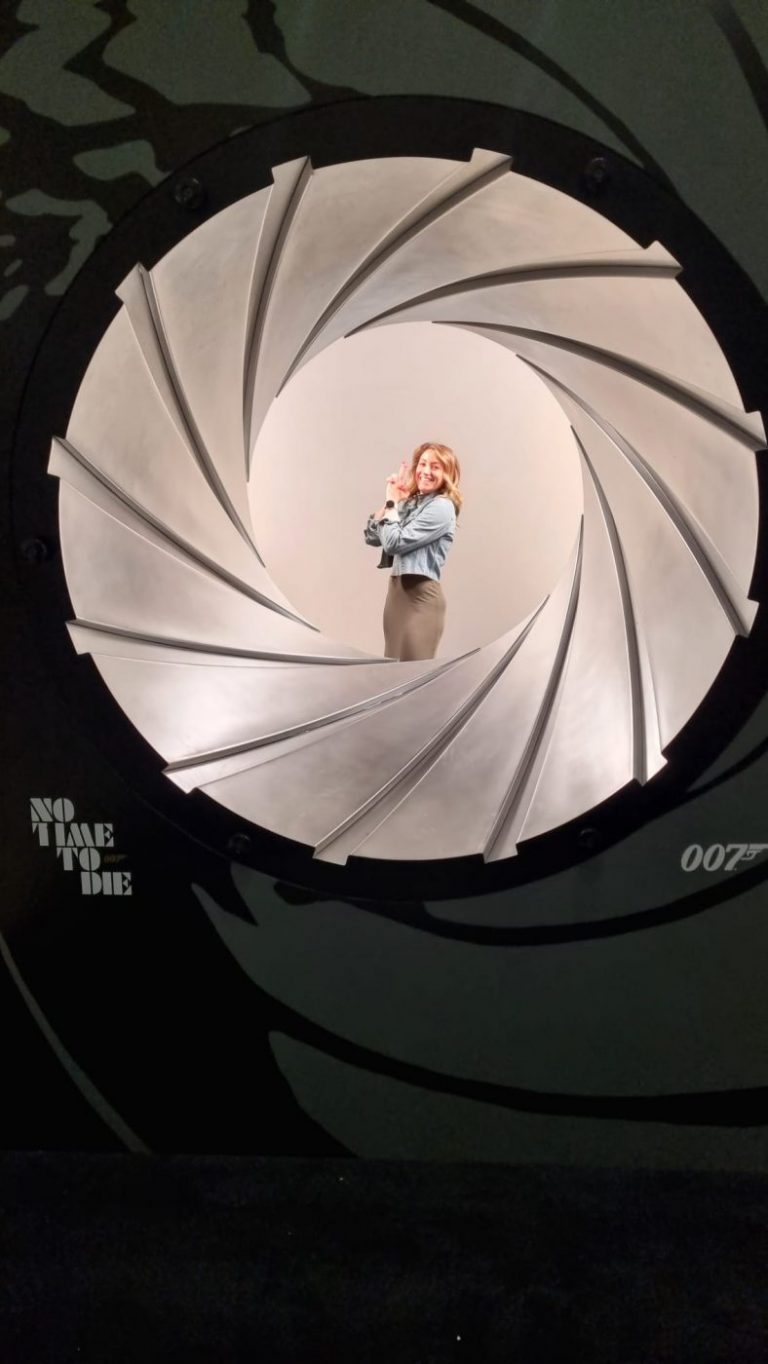
No Time to Die – Bridge Classic Cars at 007 No Time to Die Premiere
The names Cars. Bridge Classic Cars. Our very own Charlotte was at the Premiere of the latest James Bond 007 film in London this week


The names Cars. Bridge Classic Cars. Our very own Charlotte was at the Premiere of the latest James Bond 007 film in London this week
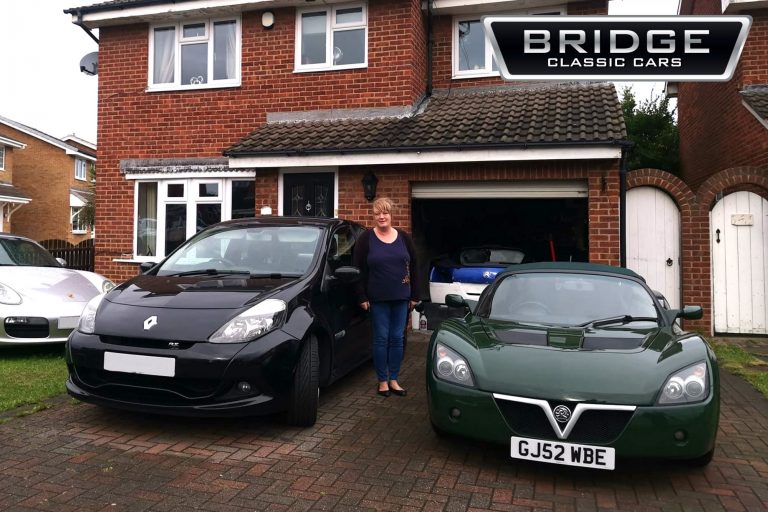
Bridge Classic Cars Competitions got to deliver our 2003 Vauxhall VX220 to its lucky new owners today! We delivered the car to Mr and Mrs

All classics need some attention. They need to be checked, kept happy and kept running. This 1973 MG B Roadster has come into us here

With such a bespoke and unique car as the 1973 Jaguar E Type Series 3 Roadster currently in at Bridge Classic Cars, only a handmade

As time went on, Bond as a character would change. The suave and sophisticated character of Connery would be replaced by several actors before we
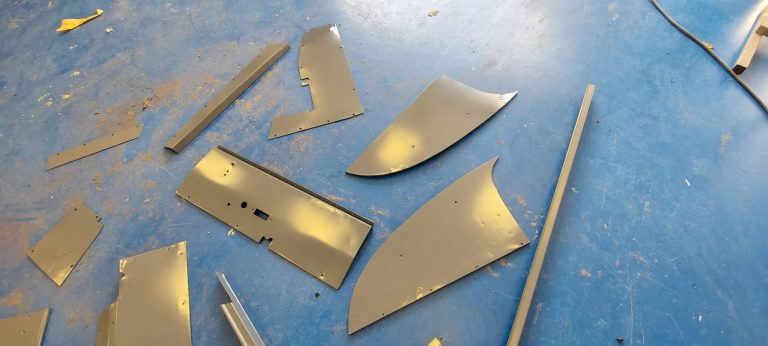
Previously, our in-house technician Lydia was busy preparing some components and pieces from the 1955 Aston Martin DB2/4 for paint. Well, those parts have now
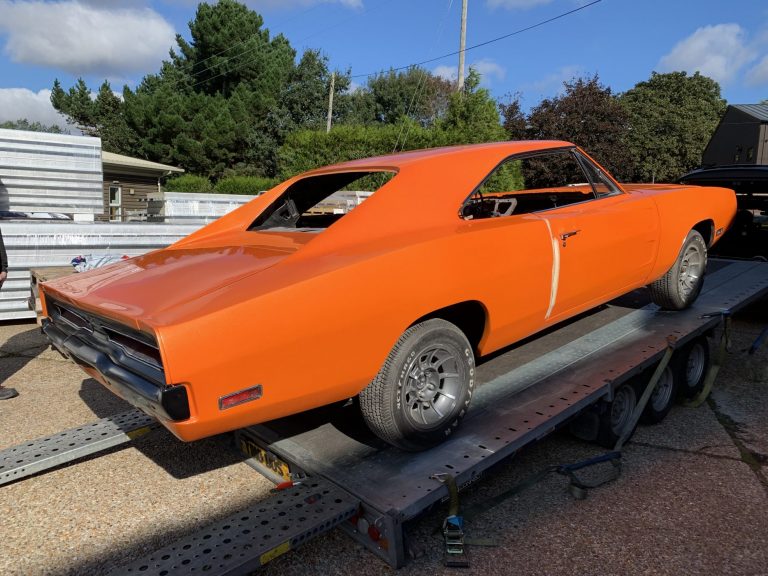
Just arrived at Bridge Classic Cars is this gorgeous 1970 Dodge Charger for interior fit out. Expect to see more of this iconic second-generation Charger

This is indeed a wonderful example of 1930s excess and style. Almost industrial in its engineering but so ornate in its look. It is of

The Aston Martin DB5. Many believe it to be The Most Famous Car in the World. It’s claimed by some that over half the worlds
The names Cars. Bridge Classic Cars.
Our very own Charlotte was at the Premiere of the latest James Bond 007 film in London this week (she won’t tell us anything about what happens)! It’s only a couple of days before it’s released to the public and we all cannot wait.
Are you going to go and watch it? Head down to your local cinema to enjoy this icon of cinema.
Bridge Classic Cars Competitions got to deliver our 2003 Vauxhall VX220 to its lucky new owners today!
We delivered the car to Mr and Mrs Spellman, who actually have another VX220 as well as their new British Racing Green example! The other one however is having a bit of work done to it after a small incident on track. But now, Ian has got a replacement to enjoy while the other is being fixed.
Thanks to their winning ticket of 4851, the Spellmans now have many years to enjoy this amazing example of an underappreciated sportscar.
All classics need some attention. They need to be checked, kept happy and kept running.
This 1973 MG B Roadster has come into us here at Bridge Classic Cars for just that. It is in to be recommissioned after laying dormant for a while.
Our technician Paul has begun work on getting this lovely, honest example of a true British sports car back on the road. To begin with, Paul stripped down the iconic twin-carburettors to make sure that the throaty 4 cylinder was getting all the air and fuel it needed.
With the carb refresh complete, it was a case of bolting them back up to the manifold to check the next part in the combustion cycle. The Spark.
To read more about that, check the News Page for updates very soon!
With such a bespoke and unique car as the 1973 Jaguar E Type Series 3 Roadster currently in at Bridge Classic Cars, only a handmade bespoke interior would suit.
Our master trim technician Kath has been working hard to get all the interior trim pieces for the E type stripped back to begin work on. Carefully she worked her way around each individual piece to preserve them for any templates that may need to be made for the car.
Some of the interior trim has metal components underneath the hides used originally. So, to make sure those pieces are in just as incredible shape as the body and chassis Kath worked on rust prevention for each piece and then finished in black.
Expect to see much more on Fern Grey very soon here on the blog.
As time went on, Bond as a character would change. The suave and sophisticated character of Connery would be replaced by several actors before we reach the 1980s with the release of For Your Eyes Only starring Roger Moore in 1981.
The 1977 film The Spy Who Loved Me, would see Bond driving another British motoring icon for the first time. A Lotus Espirit. Famously this one was more adept underwater than on land. But in 1981, Bond was back behind the wheel of Norfolks most famous export thanks to the success seen with the Esprit (known as Wet Nellie) in The Spy Who Loved Me.
The start of the film has a white Lotus Esprit Turbo in the Spanish countryside. When a wayward henchman of the man Bond is tracking decides to smash the window of the Espirit. It explodes. One of Q’s little additions to the car was self-destruction set up if the vehicle were to be tampered with. Thankfully, this car was actually a rolling shell. But for the driving sequences, a very early production car was used for the on-screen scenes. In the Film, Q’s workshop has managed to rebuild the blown up Lotus for the next time Bond would need it.
For Your Eyes Only most famously features a copper painted Lotus Esprit Turbo in a stunning backdrop of the Ski Resort of Cortina in Italy. Lotus had supplied two very early Esprit Turbos for production (10858 & 10930). So early in fact that the hero car, was actually a pre-production prototype (Chassis 10858). Both cars were delivered to production but when the location was decided on, the cars needed to be repainted. Both were finished light colours that didn’t contrast well enough against the white background of the location.
So, the cars were set back to Lotus’s headquarters of Hethel to be resprayed in the Copper Fire Metallic along with the Gold stripes and decals are seen on the cars used in the film. Whilst at Hethel, a pair of custom fabricated ski-racks were made for the Esprits to give that little bit extra cool to the cars on screen.
After filming had finished, both cars found their way to private owners after a long run of promotional duties. Chassis 10930 was actually held on to by Lotus until 1998 when it was sold at Auction. While the pre-production prototype went on to live life registered as 459 JTA with a private owner.
Apart from the Lotus, what is the other early Bond car that isn’t an Aston Martin?
Previously, our in-house technician Lydia was busy preparing some components and pieces from the 1955 Aston Martin DB2/4 for paint.
Well, those parts have now had their first coats of primer sprayed after being carefully prepared by Lydia. Any form of corrosion whether it is surface or deeper was painstakingly assessed and rectified by our in-house body and paint teams. As you can see, the results are wonderful.
This however is not the final stage for these bits from the DB2/4. Keep a watch on our News Page for more updates on this project and others!
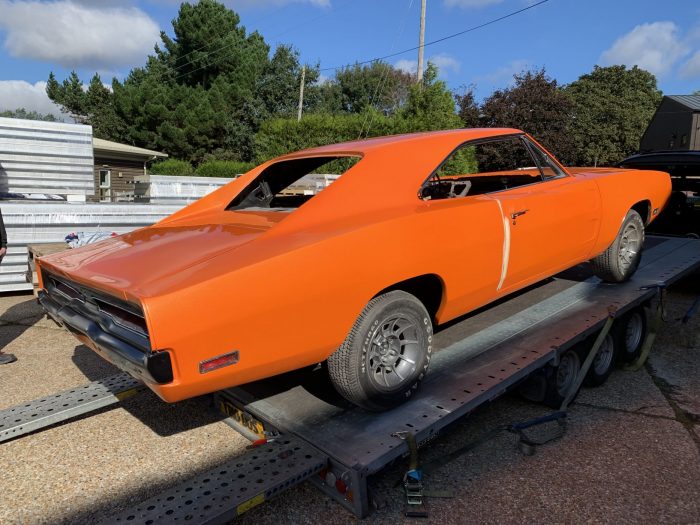

Just arrived at Bridge Classic Cars is this gorgeous 1970 Dodge Charger for interior fit out.
Expect to see more of this iconic second-generation Charger on our blog page!
This is indeed a wonderful example of 1930s excess and style. Almost industrial in its engineering but so ornate in its look. It is of course the 1930 Packard 740 Waterfield Convertible that is in at Bridge Classic Cars to have a list of jobs completed.
Thankfully, the customer supplied us with copies of the original technical manuals for the car for our technicians to work from. Scott, our in-house restoration technician, began to work on removing and adjusting the massive rear drums.
Of course with such a rare car, extreme care needed to be taken whilst removing any component from the car. As Scott gently prised the drum faces off to gain access to the shoes underneath, he carefully and methodically laid out each component that was removed from the Waterfield Convertible. Scott had noted that the drums felt a touch loose considering the size and weight of the vehicle, refering to the manual he found they did in fact need adjustment.
Once the rear brakes had been inspected, cleaned up and adjusted, Scott meticulously worked his way back to getting the drums back on this beautiful car.
At the same time as Scott was working at the rear of the Packard, John was going through his work list at the front. Carefully checking the operation of each light and noting any changes or anything untoward. The customer had made a note of the headlights not being too bright when being used. John investigated into this

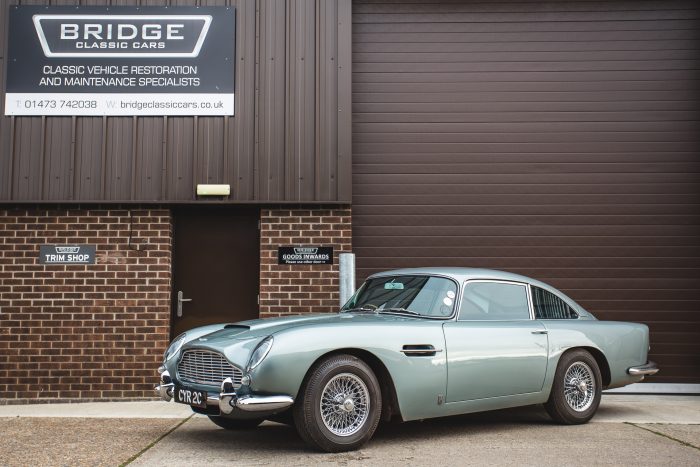
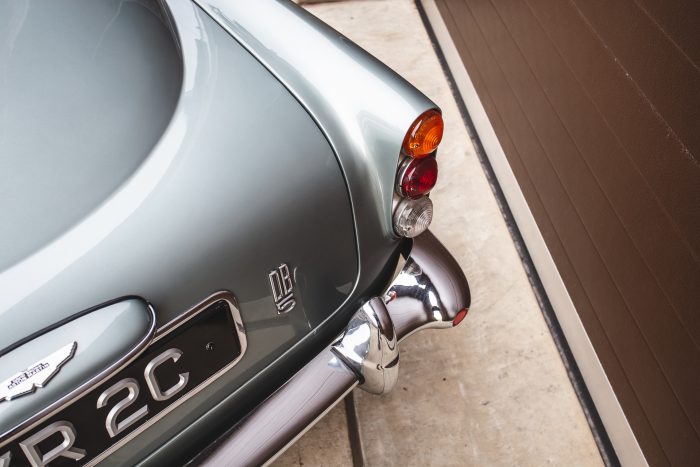
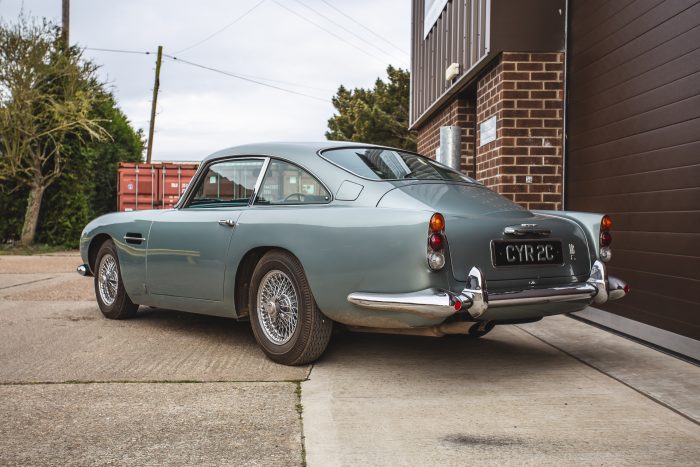
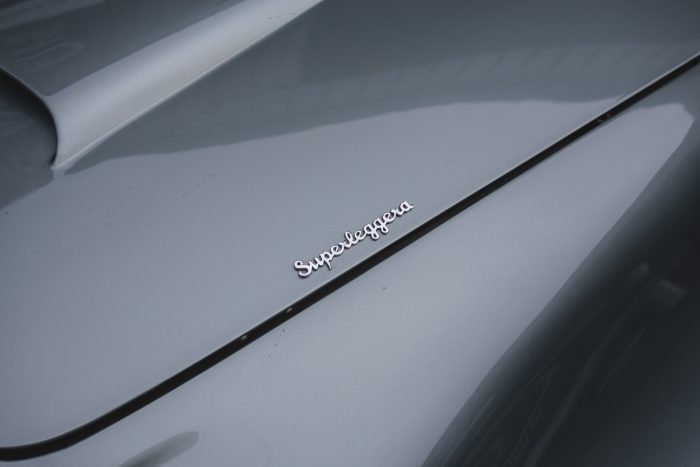

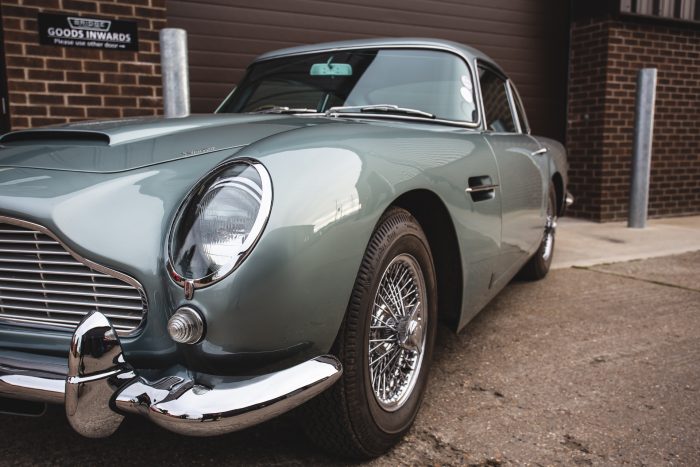
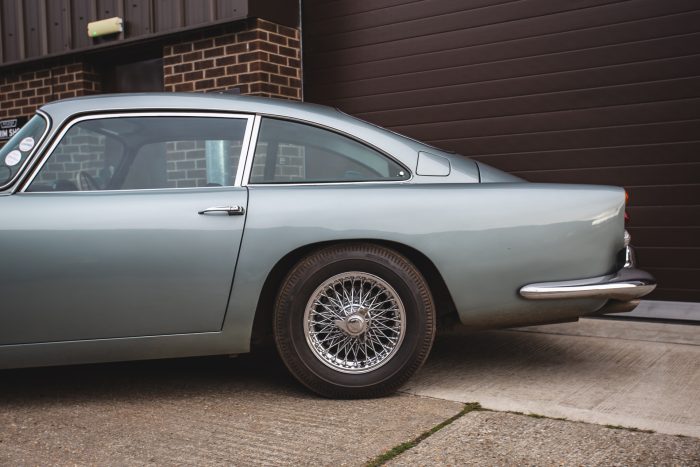
The Aston Martin DB5. Many believe it to be The Most Famous Car in the World. It’s claimed by some that over half the worlds population can tell you that James Bond, drives an Aston Martin.
The sleek, elegant lines of the DB5 made it a perfect candidate when the producers of the newly launched 007 franchise went looking for the latest car to be used by Her Majesty’s most faithful servant.
The DB5 would hit theatre screens in September of 1964, with the release of the 3rd James Bond Film, Goldfinger. This is where a now faithful audience would first catch sight of the car now known as the Goldfinger DB5.
Launched in 1963, the DB5 would serve as a replacement for the previous DB4. A long-legged, elegant GT car beloved by all and a favourite of the newly hip and happening. The DB5 used a Superleggera construction method. A sculpturesque spaceframe which keen-eyed craftsmen would then cloth in mirror-like, curvaceous panels. This appealed to the newly formed ”Q-Branch”.
At Pinewood, the designers had been working out what car should James Bond, the worlds most famous spy, drive. Ideas were bandied around a Jensen CV8, Jaguar E Type etc. But, only one car truly personified the style and the times of Flemings fictional spy. It was the DB5, with that the production the approached Aston Martin. The DB5 worked on another level as in the book Goldfinger, Bond was noted as driving an Aston Martin DB MkIII.
At first, Aston Martin was understandably hesitant at allowing their newest pride and joy to become a film star like any concerned parent would be. However, they did agree to sell two cars to the production team. The first was actually a DB5 Prototype, an earlier DB4 production car that had been modified to develop the DB5.
This prototype car would become the hero of the story. From the moment it arrived at the Pinewood workshop, the DB5 was busily modified to accept the growing list of gadgets being added to the script. For interest, in the book, the only mention of a gadget and an Aston Martin was a passage describing a smokescreen. But, for a film, it needed to get bolder and bolder.
Guy Hamilton, the film’s director, had the request which would now go down in history as one of the most memorable film lines of all time. His stepson had come to him one day and said he had seen an ejector seat in a film or a TV show. This sparked something in Hamilton. He took the idea to Production Designer Ken Adams and Engineer John Stears who said it might be possible but wouldn’t actually work, so when Connery says the famous line ” Ejector Seat? You must be joking.” Unfortunately, the crew were joking. The scene in the film was shot in multiple takes using careful angles and rigs to portray the henchmen’s unfriendly exit from the DB5. To this ever-expanding and extraordinary list, Hamilton added the revolving number plate mechanism. This famously came from Hamilton who was getting dozens of parking tickets issued against his car during production. Along with those, is the bulletproof rear screen plate and the oil hoses which drop out of the rear brake lights of the DB5.
This car (the second DB5 used for production was completely standard), was converted to become the stunt vehicle for Goldfinger. The whole conversion from DB5 prototype to The Worlds Most Famous car took a mind-blowing 6 weeks from the start of work to being delivered to set.
During both Goldfinger and lately Thunderball, the DB5s would use the number plates BMT 216A). Easily identifiable as the Goldfinger DB5s and also the number plate used on the recent DB5 Continuations known as The Goldfinger DB5s which have exact copies of the modifications to the stunt cars. These cars would then be unmodified in 1968 and sold to private owners.
But in 1995, the DB5 would return to the 007 James Bond series in the film GoldenEye. The DB5 breaks cover at the start of the film by going head to head against a Ferrari F355 GTS driven by assassin Xenia Onatopp. This particular DB5 in GoldenEye runs the registration BMT 214A. A nod to the original cars used in the earlier films. 11 years later, the DB5 would make its appearance in the first of the Daniel Craig era of James Bond with Casino Royale (the first of the Bond novels by Ian Fleming). However, this car according to Bond aficionados has nothing to do with the legendary BMT 216A. Seeing as how it’s a left-hand drive car and is wearing Bahamian numberplates.
For the world to see BMT 216A we would have to wait until 2012’s Skyfall. This is the car bond uses to escape back to his family home in Scotland. It’s also famously the film that gets destroyed out on a boggy crag. Thankfully, a series of scaled miniatures were used for this and no original DB5s were harmed during production. However, in the 007 film Spectre, the shell of the DB5 can be seen in Q’s workshop. With Bond raising a smile as he walks by his beloved DB5. Then at the end of the film, he is seen powering his way through Whitehall in London to a wonderful chorus of the 4 litre Straight-Six.
That brings the cinematic lineage of BMT 216A (the Goldfinger DB5) right up to the modern-day. In the latest film, No Time to Die, Bond is seen back behind the wheel of his Silver Birch DB5. This time, however, it is armed to the teeth. Machine guns behind the headlights but most interestingly is the faint outline of an ejector seat panel over the passenger seat… a clue perhaps? This car though is actually using the numberplate A426900, possibly one of the options from the original revolving idea Guy Hamilton proposed for the car back in 1964.
Famously though, in 1997 a very certain DB5 used during the production would make world news for its life away from the silver screen. In 1997, a DB5 known as The Road Car was being stored at an aircraft hanger belonging to its then owner in Boca Rotan, Florida. One night, however, the car disappeared. Sparking furious media debate worldwide as to where the car really is. Many believe the car to have had to have been destroyed due to its famous number. This car appeared in all of the press for the early films as well as cameo’s in multiple films such as Cannonball Run.
So, that brings all of us up to speed about the first Bond car. But, was it?
Bridge Classic Cars are award winning Classic Car Restoration and Maintenance specialists. Your pride and joy is in safe hands with our expert Classic Car Technicians. Take a look at our awards here.
We use cookies to deliver the best possible experience whilst visiting our website. By clicking "Accept All", you consent to our use of cookies, or you can manage your preferences by clicking the link below. You can manage your preferences at any time from out Cookie Policy page.